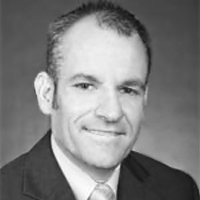Question
Are there different delivery models to provide instruction to teachers and parents about sensory processing?
Answer
Yes, there are four types of delivery models to provide information to teachers and parents:
- Face to face as part of a routine intervention (traditional)
- Multimedia
- Group based without children
- Group based with children
When we think of delivery of instruction, there are some different types of delivery. We, as therapists, typically use face to face, where it is a part of routine intervention. Kids come in, hopefully with their caregiver, and they get about 45 minutes of therapy and then you spend the last 10 minutes providing some instruction, education, or home programming. This is what we have typically done. You are able to adjust the type of instruction based upon what the caregiver or teacher needs, and you are able to do that in the moment and address things as they emerge, as being identified by either you or the caregiver with questions. One of the challenges is sometimes we do not see the caregiver. The child might come to therapy via transportation or another family member, or it may be a teacher and your interaction with the teacher is limited.
Another approach is multimedia. There might be a website that targets parents, teachers, and caregivers. The instruction could be a videotaped PowerPoint. You are providing content and a knowledge assessment at the end. This is nice because it is very flexible and affordable. Folks can do it whenever they want. The downside is in some cases you cannot curtail the instruction to the needs of the targeted learners. It ends up being very generic or foundational. It might be what the caregiver needs, but in a lot of cases a child might have specific sensory processing difficulties and behaviors, and this instruction might not meet those needs.
A third option is a group based approach without children. We have the caregivers and the teachers in a classroom type setting. We have identified what their needs are, have the content, and can adjust the content based upon the questions that the teachers and caregivers have. It can be an easy way to adjust based upon the needs of the targeted learners. The other thing that can be valuable is there then emerges more of a support group type mentality as well. Relationships can be developed, and they might carry on after the group, or if you are running the group with multiple iterations in a given year, you might see repeated caregivers come back, which is completely fine. One of the challenges is that you can have diverse learners where everybody is at a different level. Some folks might need very basic instruction, while others are ready for more. They want to have higher level content or strategies.
The final type of approach is a group setting with kids. This is typically done in preschool type environments or early intervention where you have the parents, caregivers, and teachers, and then the targeted children are there with them. This allows for some of the behaviors that are rooted in sensory processing to be identified as they emerge, and in some cases addressed in the moment while the child and the caregiver or the child and the teacher are engaging in different activities. The downside to this is this can be incredibly chaotic, and it can distract from the learning process. It can be distracting for the caregiver or teacher and affect their ability to focus, retain, and ask additional questions. There are also some questions and discussions that then are not appropriate for that type of setting.
